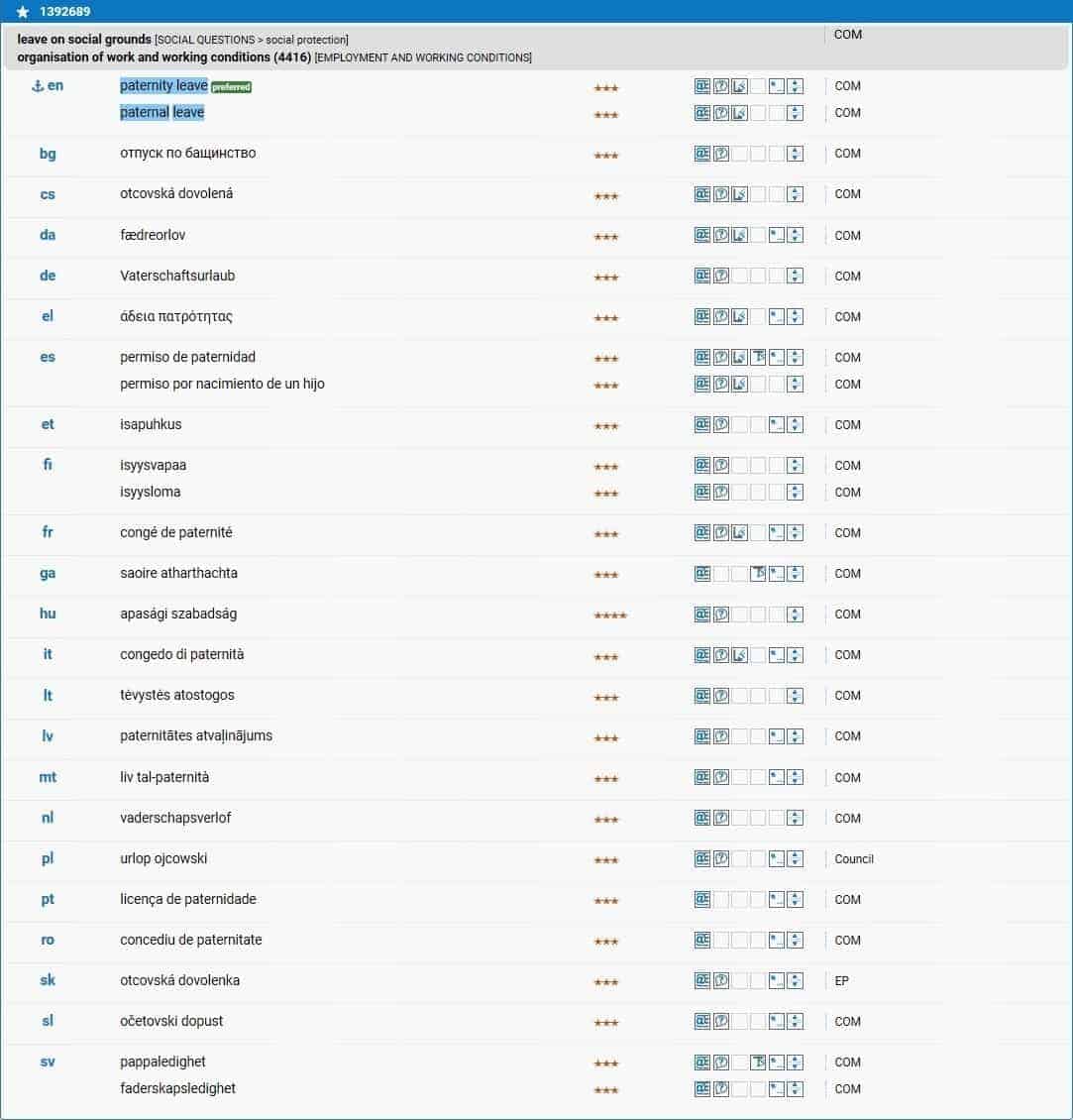The debate on gender equality, both in family life and on the labour market, has gained momentum over the last few years, giving prominence to a set of measures and policies that include childcare-related leaves.
Paternity leave, the IATE term of this week, is defined as a “leave from work for fathers to be taken on the occasion of the birth of a child” that is intended to enable them to support their partner, spend time with the new-born and care for older children.
The distinction between paternity leave and other forms of leave which new parents are entitled to can be rather unclear.
Just like maternity leave, which is reserved for women, paternity leave is an individual right and it is to be taken at or immediately after the time of childbirth. However, paternity leaves tend to be far shorter than mother-specific leaves.
Parental leave, on the other hand, is equally available to mothers and fathers and usually covers a longer period of time. In some countries both parents are entitled to the same amount of leave, while in others it is a family right which parents can split at their own discretion; in the latter case, a so-called “daddy quota”, i.e. a share of leave reserved exclusively for fathers, is often introduced to incentivize them to take time off work to fulfil childcare responsibilities. Lastly and most importantly, parental leave does not replace, but is granted in addition to paternity and maternity leaves.
The EU legal framework for paternity rights has been constantly evolving since 1975, when Sweden was the first country worldwide to adopt a paid leave policy that was available to both parents.
As of today, all EU Member States offer some forms of paternity or parental leave; however, the length, compensation and individuality of such rights can vary considerably.
The cornerstone for future harmonization was laid earlier this year with the approval of the EU Work-life Balance Directive, which aims at encouraging a more equal sharing of caring responsibilities between women and men.
Whilst maintaining the maternity rights set out in the 1992 Pregnant Workers’ Directive, the new legislation has introduced statutory paternity leave of at least 10 working days and extended the parental leave reserved for fathers.
Member States now have three years to implement these measures into national law.
Sources:
European Parliamentary Research Service (March 2019): At a glance – Maternity and paternity leave in the EU http://www.europarl.europa.eu/RegData/etudes/ATAG/2019/635586/EPRS_ATA(2019)635586_EN.pdf
European Platform for Investing in Children (2018): Paternity and parental leave policies across the European Union https://op.europa.eu/en/publication-detail/-/publication/a8464ad8-9abf-11e8-a408-01aa75ed71a1/language-en
OECD (August 2019): Parental leave systems http://www.oecd.org/els/soc/PF2_1_Parental_leave_systems.pdf
ifo Institute (2017): Fathers in Charge? Parental Leave Policies for Fathers in Europe https://www.ifo.de/DocDL/dice-report-2017-1-albrecht-fichtl-redler-march.pdf
Homepage of the European Commission – News: https://ec.europa.eu/social/main.jsp?catId=89&furtherNews=yes&newsId=9438&langId=en
IATE entry (https://iate.europa.eu/entry/result/1392689/en-all)
 Viola Librenti holds a BA in Intercultural Communication and a MA in Conference Interpreting from the University of Bologna. She has studied and worked in Italy, Germany and the UK and is currently a trainee in the Italian Translation Unit of the European Parliament in Luxembourg. She has a background in terminology and technical translation and loves travelling, cooking and photography.
Viola Librenti holds a BA in Intercultural Communication and a MA in Conference Interpreting from the University of Bologna. She has studied and worked in Italy, Germany and the UK and is currently a trainee in the Italian Translation Unit of the European Parliament in Luxembourg. She has a background in terminology and technical translation and loves travelling, cooking and photography.

